The 80 Greatest Shots In Disney Animation History [Part Seven]
(Welcome to The Greatest Shots in Disney Animation History, a limited series where Disney expert Josh Spiegel selects and ranks the defining moments in one of the greatest, most important, and most influential collections of films ever made.)
This part of the ongoing list covers entries 20 through 11.
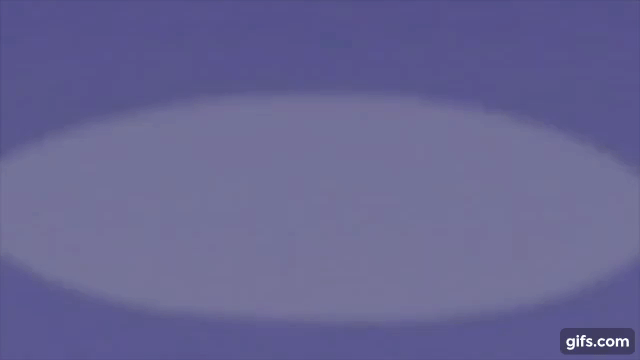
20. Fantasia 2000: The opening shot of “Rhapsody in Blue”
The best sequence of Fantasia 2000 is, hands down, the "Rhapsody in Blue" sequence directed by Disney animator Eric Goldberg. With the iconic George Gershwin composition as the soundtrack, Goldberg took visual inspiration from the great artist Al Hirschfeld. Hirschfeld's bold, sharp lines take shape in the opening shot of the sequence, as the skyline of New York City comes into view while the sun rises over the metropolis. Though "Rhapsody in Blue" has many wonderful shots within its whole, this not only sets the foundation for the rest of the sequence, but it's both fully Hirschfeldian in design and yet truly colorful, unique, and exciting.
19. Zootopia: Flash gets the joke
Why is it, exactly, that Zootopia became a massive worldwide hit? (Do you remember that it made more than a billion dollars worldwide? Because it did.) Arguably one of the selling points was a trailer attached to Star Wars: The Force Awakens that essentially showcased one scene, in which the sly fox Nick and well-meaning bunny cop Judy visit the Zootopia DMV, run by sloths. Nick tells a goofy joke to his sloth pal Flash, and Flash's very, very, very slow reaction, changing from stone-faced to hysterics, is an incredible example of how powerful character animation can be even in computer animation, and even when it feels like you're watching a face shift frame by frame. This scene is legitimately very funny, all because the animation is willing to take its time to raise the comic stakes.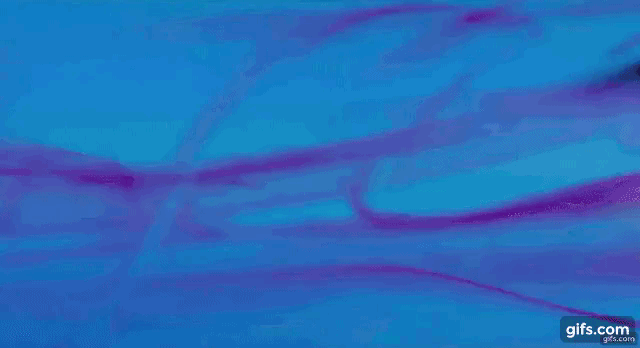
18. Pocahontas: A mix of colors in the wind
Pocahontas is a dicey affair, 25 years later. The film's representation of Native American culture is no doubt more well-meaning than that of Peter Pan, but by adapting a real story, the Disney filmmakers were still playing with fire. Story aside, though, the film's animation remains a true standout a quarter-century later. The film's centerpiece song, "Colors of the Wind", brings the concept of that title to life as Pocahontas tries to instruct the English settler John Smith about the value of leaving nature as it is. At one key point, we see Pocahontas as visualized as if she herself is made up of gusts of wind, her face expressively drawn amidst the breeze. It's one of many striking moments in the setpiece, let alone the film itself.
17. Aladdin: The Cave of Wonders
Computer animation was still in its infancy in the fall of 1992, but Walt Disney Animation Studios had been gradually incorporating more and more of it in their hand-drawn animated titles. For Aladdin, the use of computer animation is most notable in the depiction of the Cave of Wonders, personified by its entrance: a large talking tiger head seemingly made out of sand. The visualization of the Cave of Wonders, represented in this shot, is part of what kicks off the adventure in Aladdin — before we meet the title character, we meet the mysterious cave that has deemed him a diamond in the rough. The Cave of Wonders manages to both look fully realistic and somewhat odd, without ever being distracting. It's a sight to behold.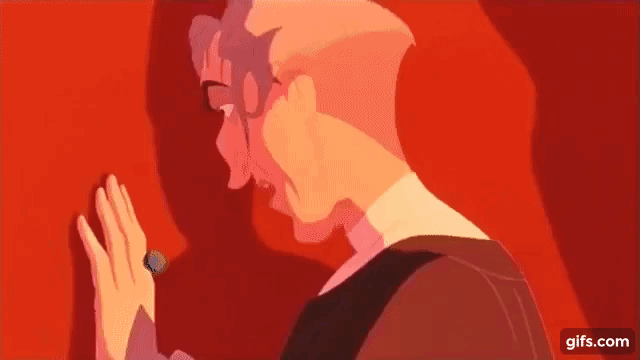
16. The Hunchback of Notre Dame: Frollo on his knees
The Hunchback of Notre Dame has its moments, times where it not only rises to the level of the greatest animated films from Walt Disney Pictures, but where it just achieves pure, bold greatness. Such a moment occurs in "Hellfire", a song in which the villainous Frollo explains how he's either got to consummate his lust for the beautiful Esmeralda or else he'll kill her. (Y'know...for kids!) The complexity of the musical number is easily matched by some of the most striking and seductive animation in Disney's history. (Esmeralda is indeed one of the most physically attractive of Disney's female characters, thus clarifying Frollo's lust. But that still opens up a whole can of worms.) The climactic shot comes when Frollo gets on his knees, singing to the heavens in a terrifying tableau. Disney's animation hasn't gotten quite so daring since.
15. Pinocchio: Watching Pinocchio and Honest John through the rooftops
Pinocchio isn't just Disney's best animated film, it's a film with many more technological breakthroughs than its predecessor. Just as Snow White attempted to have its camera mimic live-action style, the case is true with this film. After the extended opening sequence in Geppetto's workshop, Pinocchio is off to school with his conscience Jiminy Cricket, before being waylaid by the sly con artist Honest John. The foxy character sings "An Actor's Life for Me" to Pinocchio to lure him away from school and into the illegitimate theater. While he does so, in one key shot, the camera appears to be placed on the rooftops of the small village, panning gradually from left to right and back again as the characters dance and sing. What makes this shot so special is that it's another case of Disney accurately creating animation that mimicked live-action filmmaking, likely without most audiences recognizing the technique.
14. Sleeping Beauty: Aurora and her prince in the forest
Before she becomes the snoozing title of the film, Aurora gallivants through the forest one day without realizing exactly how important that day is (her last before returning to the kingdom where she was born) who she really is (the princess), or who the strange man she's about to encounter is (the prince to whom she's affianced). All we get to see is her wandering the forest as she launches into the film's most memorable song, "Once Upon a Dream". Eric Larson, one of the fabled Nine Old Men, served as sequence director on this section of Sleeping Beauty, and with his team involved, he came up with gorgeous shots like this, arriving after that song and Aurora dances a bit with her prince, that only prove how the time and money that can be used to craft such visuals are worth it.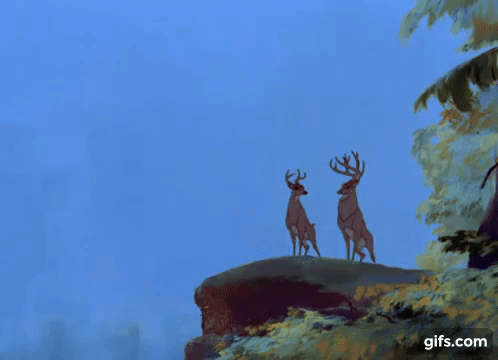
13. Bambi: The last shot
Before there was The Lion King, there was Bambi. And though the concept of the circle of life dominates the 1994 animated film to the point where it's spelled out often, it really began with Bambi. Just as Simba's journey ends with him taking the place of his father atop Pride Rock, Bambi's journey ends with him becoming the new Prince of the Forest like his father before him. The key difference is that the Great Prince of the Forest is still around at the end of Bambi, as reflected in the last shot. Bambi and his mate Faline now have two fawns; after Faline tends to them, she looks up and we see, from her point of view, Bambi and his father in the distance, keeping watch. It's a bittersweet finale — Bambi only ever knows his dad after losing his mom, and it's hard not to wonder if Faline may meet a similar fate to her dead mother-in-law. Yet the conclusion is also fitting, captured beautifully in the artistic rendering.
12. The Princess and the Frog: Dr. Facilier and the other side
It feels like a generation ago that we got to see hand-drawn animation at its pinnacle in the 2009 film The Princess and the Frog. This throwback to the era of old-fashioned fairy tales is distinctly American and distinctly Disney, a a riff on the fable of the frog prince in 1920s-era New Orleans, with the lead being the fierce and intelligent Tiana. Before Tiana encounters her frog prince, that amphibian has to be a human. That human is the foppish Prince Naveen, who's easily lured in by the sly Dr. Facilier (voiced masterfully by Keith David). Facilier plies his voodoo trade in the nastily charming song "Friends on the Other Side", which starts charming and ends ominously, as Facilier turns Naveen into a frog and appears before him in this shot, as a hallucinatory neon swirl of human and monster. What lush, creepy, distinct animation.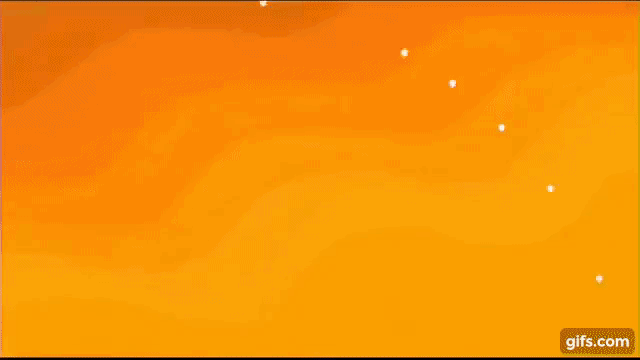
11. The Princess and the Frog: Almost there
Tiana, though the title may suggest otherwise, isn't actually a princess (at least not initially). All she wants in life is to open and run a restaurant to both honor her fallen father and to live out her dream of being a master chef. Before her transformation into a frog changes her life goals, though, Tiana sings the wonderful "Almost There" to her mother to explain how close she is to making this dream a reality. But it still looks like a dream — once the song kicks into full gear, the animation style shifts to something inspired by Art Deco design, from the champagne glasses to Tiana's face. The effect is gorgeous and truly awesome, as we watch shots like this make the dream so tantalizing that you want it to come true for ouer heroine.
***
We're almost there. The final entry, and the top 10, arrive tomorrow.
